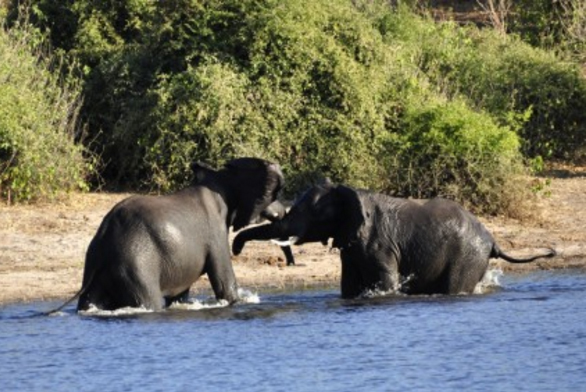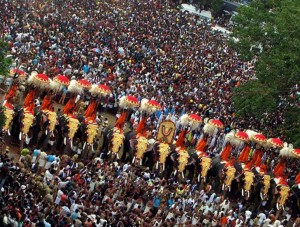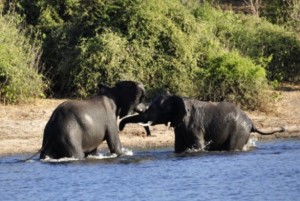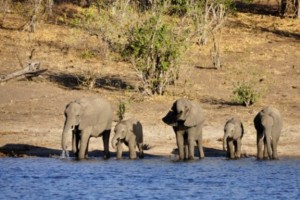
Elephant conservation in India


Elephants have been part and parcel of Indian culture. Any traditional festival in the earlier days had an array of elephants assembled, adorned with beautifully designed caparisons, as a symbol of pride. They were also used as a mode of transportation. Most of the Indian Maharajas (Kings) had domesticated elephants trained for various purposes.
As a part of this tradition even today temples have domesticated elephants exclusively trained for the temple festivals. One such major celebration is known as ‘Trissur Pooram’(Trissur or Trichur is a district in Kerala State and Pooram refers to the festival). Trissur Pooram is a Hindu temple festival conducted every year at Vadakkunaathan Temple. It’s a world famous festival and thousands of foreigners come to Kerala during this month to participate in the celebrations along with the localites.
India is home to about 60% of all of Asia’s wild elephants and about 20% of the domesticated elephants. Even though elephants are considered as a symbol of pride not all of them get the same Royal privilege. Many of them are put in zoos and many are trained for other hard labours such as pulling wagons for road constructions, logging forest woods, etc.
Elephants are usually trained by mahouts who are specially skilled in domesticating elephants. The job is really risky. Domesticating these mammals are as expensive as dangerous. Elephants consume about 10 percent of their body weight each day. They feed on grains,leaves, grass, bananas and tree branches. Providing proper food and habitat for the surviving elephants is becoming a concern. Deforestation has destroyed their natural habitats which in turn has greatly reduced the chances of survival of elephants.
Another major factor for the reduction of elephant population is the improper breeding environment. Research on elephants shows that elephants in zoos breed poorly or don’t breed at all. The studies shows various reasons for the same, the incompatibility of the potential pairs or the non desirable genetic qualities of the pair, being some of the main reasons.
The transportation of the desirable elephant to various zoos for mating purpose is also a Herculean task. Many zoos are not equipped to handle adult male elephants whose behaviour during breeding involves prolonged aggressiveness and destructive behaviour. In addition to these difficulties, most of the female elephants do not get normal estrous cycles. Even the artificial insemination proves to fail in such cases.
Considering the alarming decrease in elephant population the Government of India Ministry of Environment and Forests launched “ Project Elephant “ in 1992. The objectives of this project included protection of elephants, their habitat and corridors, addressing issues of man-animal conflict and welfare of captive elephants.
Financial and technical support were provided to major elephant bearing states in India. The activities under this project covered all the major concerns regarding the elephant population.
Ecological restoration of their natural habitats, scientific and planned management of the surviving elephant population, measures for protecting elephant community from poachers and other calamities, conducting public education and awareness programmes, provision of veterinary care and rehabilitation/rescue centres are some of the activities involved under this project.
With these kind of initiatives and proper public awareness it is possible to witness a gradual increase in the elephant population.
-Prabala KP

